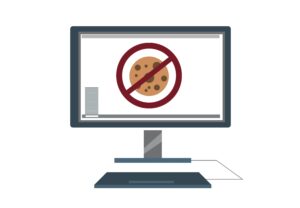Mixed reality is taking a leading role in modern B2C and B2B marketing efforts.
Forty-four percent of mid-market companies have already adopted the technology, seeing increased levels of engagement among their customers while driving a new paradigm of immersive brand interactions. In fact, the market for AR and VR continues to grow according to ABI Research, which recently forecasted that VR in retail and marketing sectors is expected to generate $1.8 billion in 2022.

And it isn’t alone. Mixed reality plays a starring role alongside artificial intelligence, the Internet of Things, and conversational voice interfaces–to name a few emerging technologies–in today’s customer experience (CX) revolution. Marketers recognize that if they move quickly and adopt these evolving technologies, they will reap the benefits that come from having a highly differentiated CX strategy.
Of course, mixed reality isn’t, by any means, the Holy Grail for all brand marketing. Savvy marketers will thoroughly research how AR and VR can tie directly into their sales and marketing efforts and explore different ways to enable innovative, customer-focused use cases in today’s competitive marketing landscape.
So how can you get started with AR and VR today? Thankfully, you don’t have to start from scratch. New platforms and resources are making it easier than ever to pursue a unique mixed reality marketing strategy. Here are a few lessons that industry pioneers have learned to help guide your brand’s exploration with the emerging technology.
Already, a number of B2C and B2B organizations are seeing successful adoptions of AR and VR, providing some key insights that you can emulate.
You May Also Enjoy:
- American Express on How and Why AR Works for the Brand
- 3 Augmented Reality Trends That Will Define Marketing in 2019
- How Sun-Maid is Back in the Spotlight After a Decade in Darkeness
Key takeaways from unique mixed reality implementations include:
1. Implement Mixed Reality to Provide Real and Relevant Value to Customers The use of AR and VR should align closely with overall brand messaging and value propositions. This strategy should look to engage customers and provide useful information to their CX journey. For example, Houzz, a design and home renovation community and platform, incorporated AR into its mobile app to help users seamlessly preview and purchase items for their (virtual) homes. That approach directly aligns with the experience that customers have already come to expect from Houzz–a straightforward, no hassle home design experience. To date, the in-app AR experience has been used by more than one million people and those who engaged with the AR experience were “11 times more likely to purchase and spent 2.7 times more time in the app.”
2. Recognize Mixed Reality Marketing Can Impact ROI Investigate how the use of mixed reality can positively affect overarching business goals, by identifying scenarios where it can make the most impact. Duke University, for example, offers an interactive virtual reality tour of its international campus in China for prospective students. The VR tour actively draws in new students and has become a boon for international students weighing a final decision–especially those who might not be able to afford a physical tour of every prospective university in their sights.
3. Mixed Reality should Augment Marketing, Not be its Foundation Marketers should only implement mixed reality experiences where it makes most sense. For example, Sony Pictures implemented an AR experience through Snapchat’s 3D World Lens to promote its Jumanji DVD release. The AR experience was only one small component of the studio’s overall marketing efforts, but the interactive and fun experience it provided helped boost brand awareness with a key audience across a popular social media channel.
4. Ensure Cross-Departmental Collaboration when Applying Mixed Reality in B2B In contrast with B2C marketing, B2B marketing is often geared toward top business decision-makers, so communicating a high level of technical accuracy and business knowledge is crucial. For example, quality assurance firm Lloyd’s Register (LR) created its VR Safety Simulator in close collaboration with its training center experts, operations department and industry specialists. The result was a true to life, educational simulation of complex safety environments that could be marketed at industry workshops, conferences and in direct board-level appointments. The simulator saw extensive success, including a 23 percent increase in bookings for LR’s training services within months of its launch.
The biggest takeaway is that newer technologies can be–and should be–explored and adopted in a piece-meal approach, as a supplement to the larger marketing efforts that helps boost ROI. As the marketing landscape becomes populated with novel and engaging brand experiences, experiment with digital innovation as a way to reach different audiences and provide an immersive experience that surpasses traditional marketing methods.
Austin Miller is director of product marketing at Oracle Marketing Cloud.



 Network
Network

